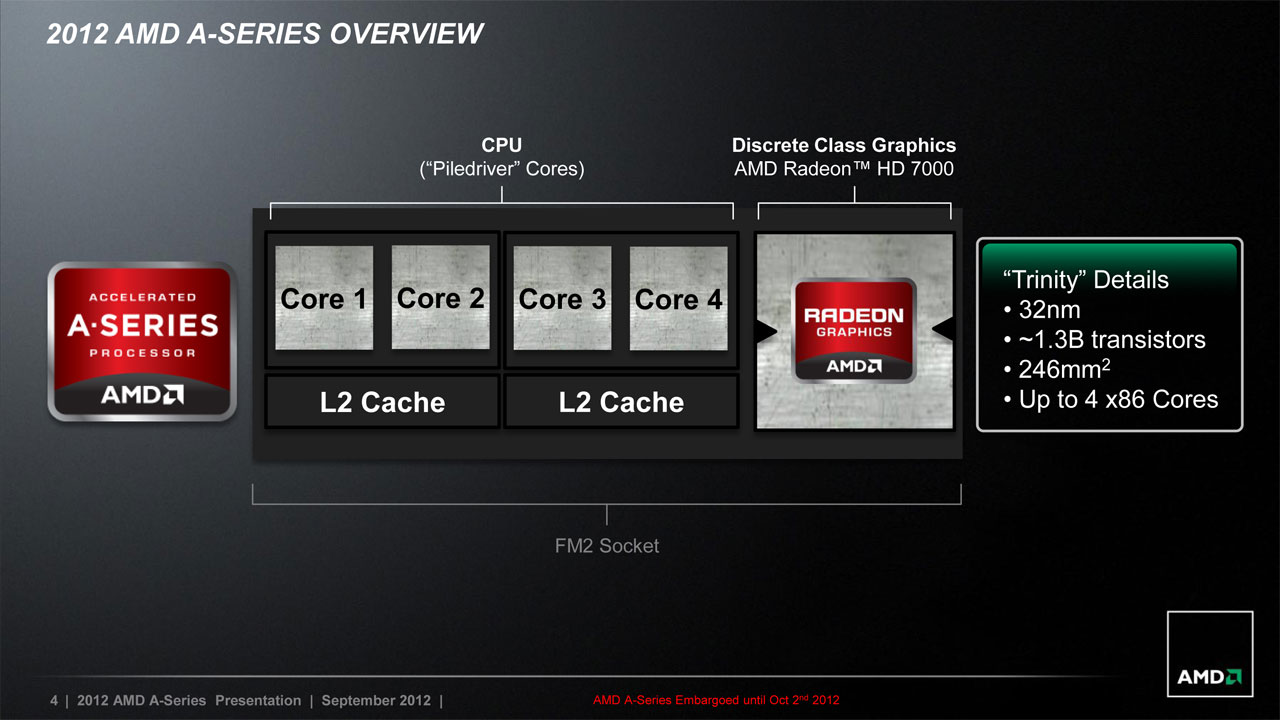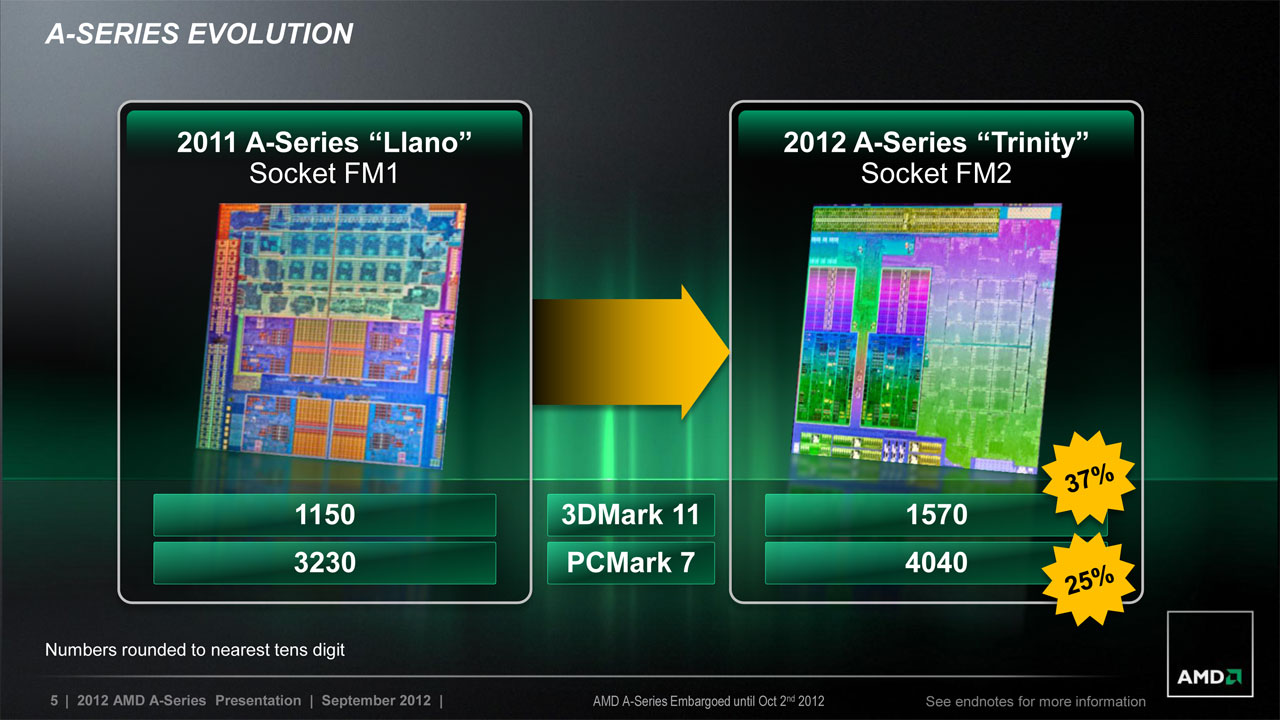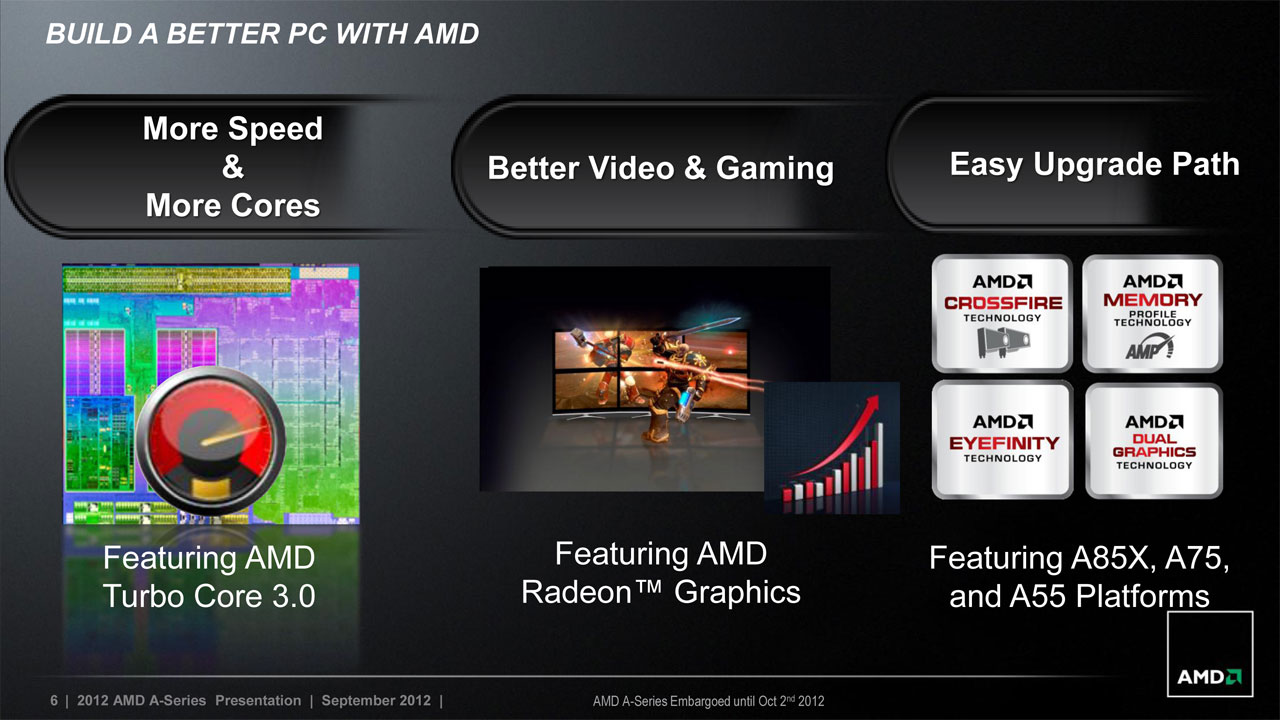Just about a year ago AMD release their first flagship APU, the A8-3850. We
reviewed the platform and found it a good product for gamers interested in "indie" titles or mainstream titles running at mid-range settings. Perhaps surprisingly we did find its compute capabilities on par with higher end offerings from Intel, when it game to gaming with a discrete GPU. In that time technology and game design have progressed significantly. What can we now expect from the AMD A10 APU?
I've got to be honest in going into this review, I have developed a bias out outlook/perspective. The CPU comparisons of my A8-3850 review showed me that the AMD A8 APU could keep pace with a high end Intel CPU, when paired with a discrete GPU. We (the gaming community) keep being told that we need the best of the best, in each of our components, to have the best gaming experience. The truth is that much of the power being marketed to us is simply redundant or unneeded. The sum of a gaming rig should be greater than its parts.
There should be a balance of performance where we say some component is "good enough", and additional money should be directed to another component such as a better GPU, SSD or more RAM. Based on my previous look at the A8 APU, I'm betting that the CPUs most people covet are overkill and money is wasted on power that will never been realized. Will the A10 be good enough for today's games, or will you need more? We aim to find out...
Architecture
To be honest, most detailed architecture discussions bore me. I get the high level pieces - X number of cores, Y clock frequency, etc., etc. But at a certain point it becomes more than I care about. What I want are the basic detailed on how the technology has advanced, and what that means to me - in a practical manner.
The AMD A10 APU is an update of last year's architecture found in the A8-3850. It still has a quad-core CPU, though that has been updated to keep in line with AMD CPU advancements over the last year. The integrated GPU has been upgraded from a Radeon HD 6550D, to a Radeon HD 7660 HD. This sounds like an upgrade I can understand, considering that we benchmark GPUs in each generation.
The GPU cores in the new chip only have 384 "stream" processors, versus 400 in the A10. However, they run at 800Mhz, versus the 600 MHZ in the A8. Also, the Radeon HD 7660 HD core utilizes the "Graphics Core Next" architecture of the Radeon HD 7000 series, which is supposed to be inherently better than the previous generation. Additionally, you can add in a Radeon HD 6670 GPU for a dual-GPU configuration.
Platform |
Series |
Model |
CPU |
GPU |
Core |
Freq. |
Cache |
Model |
Config |
Freq |
Brazos |
Zacate |
E-350 |
1 |
1.5 GHz |
512KB |
HD 6310D |
80:8:4 |
500MHz |
Llano |
Lynx |
A8-3850 |
4 |
2.9 GHz |
4x 1MB |
HD 6550D |
400:20:8 |
600MHz |
Virgo |
Trinity |
A10-5800K |
4 |
3.8 GHz |
4x 1MB |
HD 7660D |
384 |
800MHz |
My glossy-eyes take:
- It's got a quad-core CPU, which appears to be the baseline requirement for a high-end CPU these days. The A8-3850 clocked in at 2.9GHz., while the A10-5800K comes in at 3.8GHZ wth a 4.2GHz "turbo" mode. Considering the A8 performed about as well as my old Intel i7-920 and my current i7-2600k in gaming, I expect the A10 to do just fine.
- The Radeon HD 6550D in the A8 did okay at 1080 gaming, and we've seen significant improvements from the AMD 6k series of discrete chips to the 7k series. The GPU core of the A10 has has fewer processors, but they run significantly faster, and are expected to have additional inherent efficiencies (based on the discrete 7k GPU benchmarks). I expected to see significant improvements here.
If you're into PowerPoint slides, we've got some of those we can share:




Trinity Eyefinity
The A10 APU (codenamed "Trinity") comes with Eyefinity capabilities out of the box. The MSI motherboard AMD supplied came with VGA, DVI, HDMI and DP display connections. Using VGA+DVI+HDMI or VGA+DVI+DP configurations, you can enjoy Eyefinity with the integrated GPU. For my testing I used VGA+DVI+HDMI, using a DVI>HDMI cable for the third connection. There is no option to use an all digital configuration of DVI+HDMI+DP, at least with the MSI FM2-A85XA-G65 mainboard.
While primary useful in productivity settings, I did try a bit of gaming on the A10-5800K in Eyefinity. I was able to run Dirt3 on High settings and 0xAA, at 3x1080p and get 15fps. Dropping the resolution to 3x1600x900 gave me 21fps. Neither of these are truly playable, but they do show the power available in the Trinity APU. I did try dropping the visual quality to Medium, but that only gave me one +1fps at either resolution.
H.A.W.X. 2 ran 3x1080p at max settings, but with 0xAA, at 17fps. Dropping the resolution to 3x1600x900 brought the score up to 22fps. I also took Torchlight II for a spin, running through the first level on max settings. At 1080p it clocked in at 22fps. There are plenty of display options left in Torchlight II that would allow you to push up past 30fps at 3x1080p.






